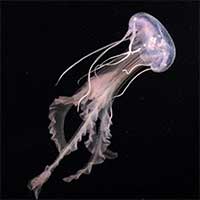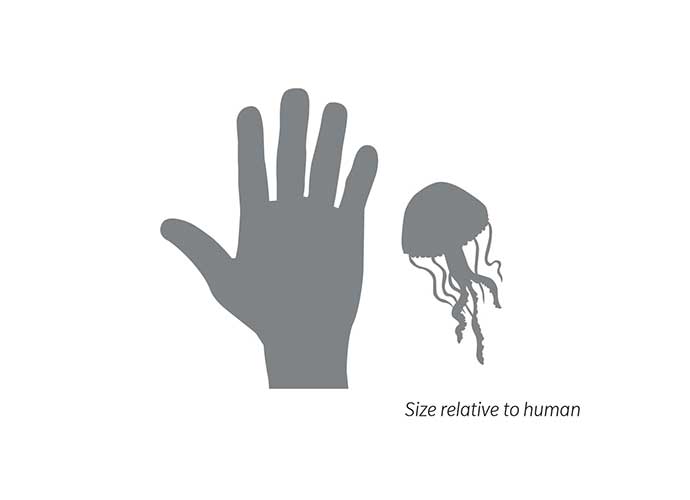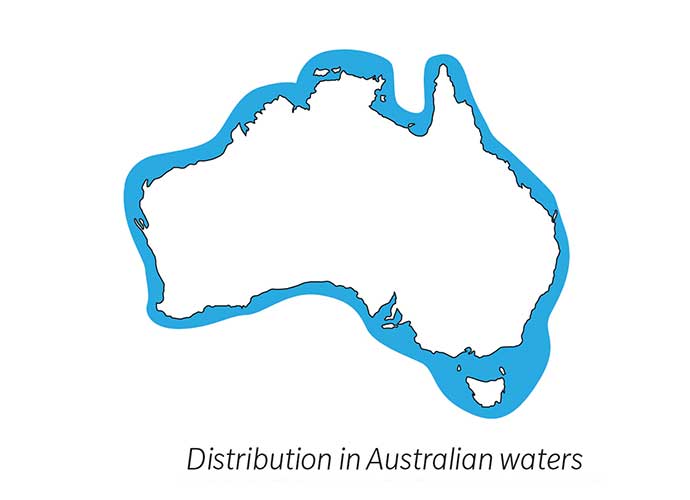In an emergency, call TRIPLE ZERO (000)
marine stingers
There are several species of marine stingers found in the waters at Queensland beaches. These include the ‘box jellyfish’ and the irukandji, which are classed as dangerous tropical marine stingers.
While marine stingers may be present throughout the entire year in tropical Queensland, the risk associated with these two types of potentially dangerous jellyfish are higher during the ‘marine stinger season’ that typically runs from November through to May.
During these warmer months, it is of particular importance to swim only at a patrolled beach under the guidance and supervision of lifesavers and lifeguards.
BLUEBOTTLE (PHYSALIA PHYSALIS)
Common Name
Bluebottle, Portuguese man-o-war, Pacific man-o-war
Air-filled sac up to 8cm in length, usually with a single, long, blue main fishing tentacle hanging underneath. This may contract to a few centimetres or extend to cover over 10 metres in length. Some may have numerous main fishing tentacles and can cause painful stinging.
Distribution
Australia wide and in most warm oceans worldwide.
- Do not allow rubbing of the sting area.
- Adherent blue tentacles may be seen after a sting and are distinctive for Physalia. Remove any adhering tentacles.
- Rinse the area well with sea water (not freshwater)
- Place the sting area in hot water - no hotter than the rescuer can comfortably tolerate for 20 minutes.
- If the pain is unrelieved by heat, or if hot water is not available, apply cold packs or ice in a dry plastic bag.
- Send for medical aid if symptoms persist.
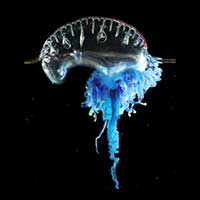
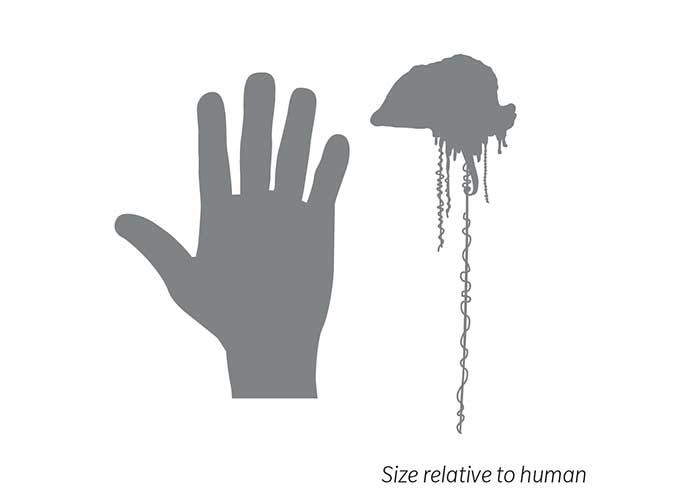
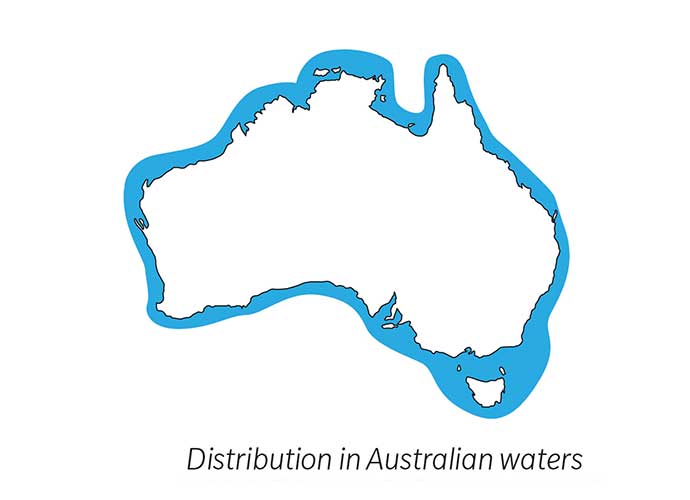
BOX JELLYFISH (CHIRONEX FLECKERI)
Box jellyfish, sea wasp
A large but almost transparent jellyfish with a box-shaped bell up to 38cm in diameter. Up to 17 ribbon-like tentacles arise from each of the four corners. These may contract to about 10cm or may extend up to 3m.
Shallow, tropical Australian waters north of Agnes Water, Queensland, all Northern Territory waters and Western Australia south to Exmouth. Stings from Chironex have been recorded predominantly in coastal areas.
Its sting causes immediate severe burning pain and whip-like marks, often with tentacles remaining on the stung area. Severe stings may cause the casualty to stop breathing and suffer cardiac arrest.
- Remove casualty from water if safe to do so
- DRSABCD
- If casualty has more than one localised single sting or looks/feels unwell, dial triple zero (000) and seek assistance from a lifeguard if available
- Assess casualty and commence CPR immediately if required
- If possible, treat the sting by pouring vinegar for at least 30 seconds and then pick off the tentacles
- If vinegar is not available, pick off tentacles (this is not harmful to the rescuer) and rinse well with sea water. Apply a cold pack or ice in a bag for analgesia
- Anti venom is available for Chironex fleckeri and other multi-tentacled box jellyfish stings at hospitals and ambulance stations in tropical coastal areas
- Casualties who initially appear stable but experience severe symptoms in the following 30 minutes may be suffering Irukandji syndrome and need urgent medical care
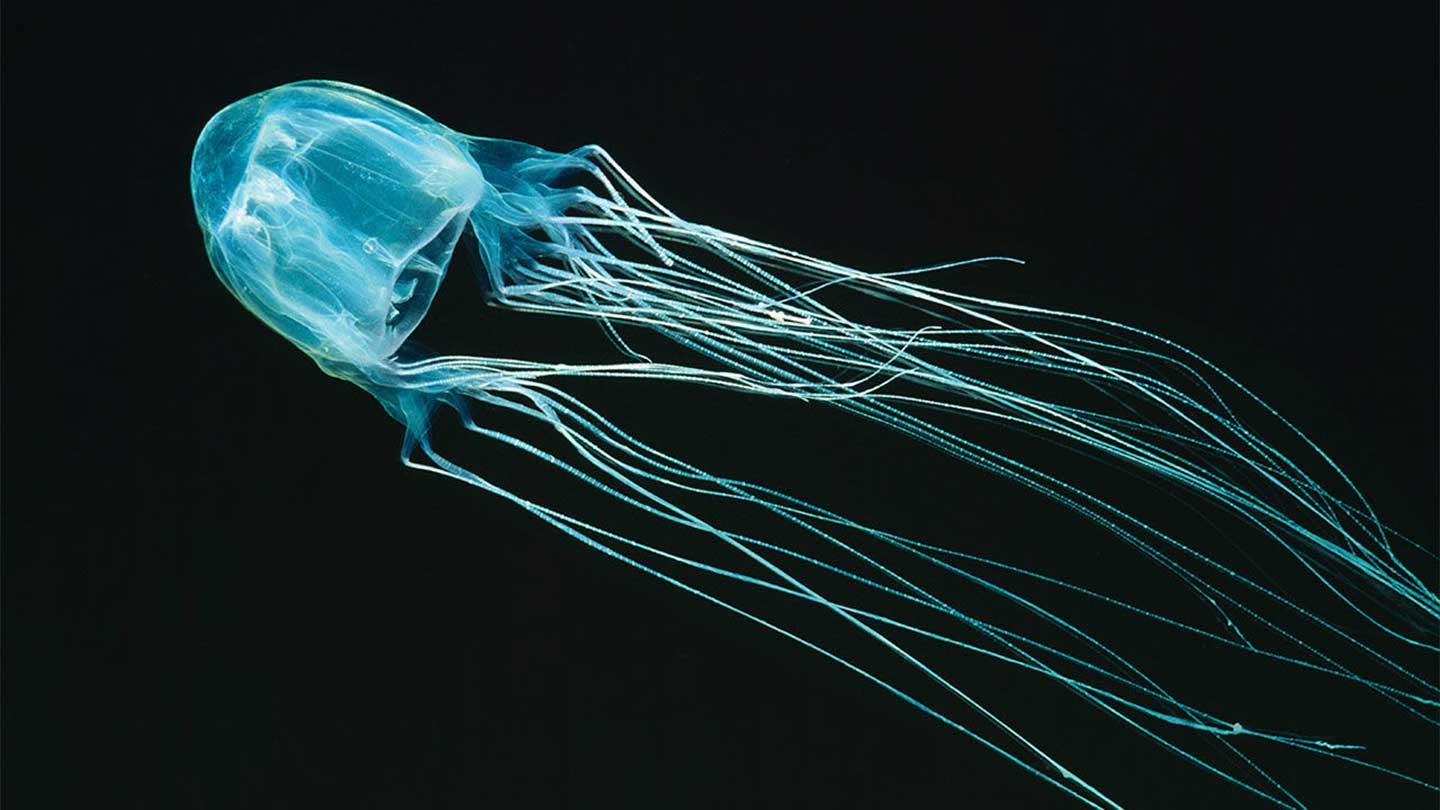
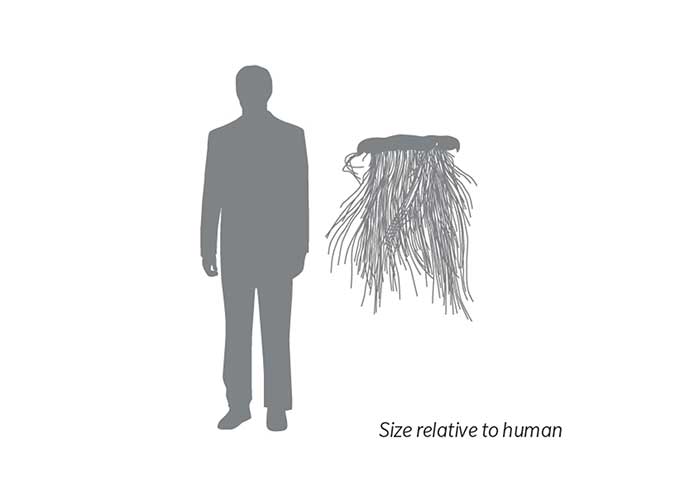
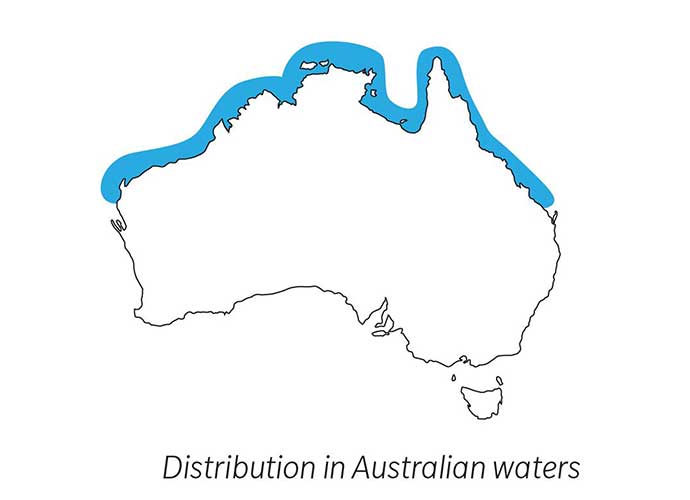
IRUKANDJI (CARUKIA BARNESI)
Irukandji
Small transparent box jellyfish, 1-2cm in diameter, usually not seen. Some may be up to 10cm long.
Distribution
Tropical Australian waters north of southern Fraser Island (Queensland), Northern Territory waters and Western Australia south to Exmouth.
Irukandji jellyfish cause an initial minor skin sting followed 5-40 minutes later by severe generalised muscular pain, headache, vomiting and sweating. The sting from some species can cause very high blood pressure or have effects on the heart which may be life threatening. These symptoms are sometimes referred to as Irukandji Syndrome.
Because the symptoms of Irukandji Syndrome may take time to appear, all tropical jellyfish stings should be doused with vinegar. The casualty should remain out of the water, in a safe location and monitored for 45 minutes.
- Remove casualty from water if safe to do so
- DRSABCD
- Call for help - dial triple zero (000) for an ambulance
- Treat the sting - douse the area liberally with vinegar for at least 30 seconds
- Monitor the casualty and seek lifeguard assistance if available
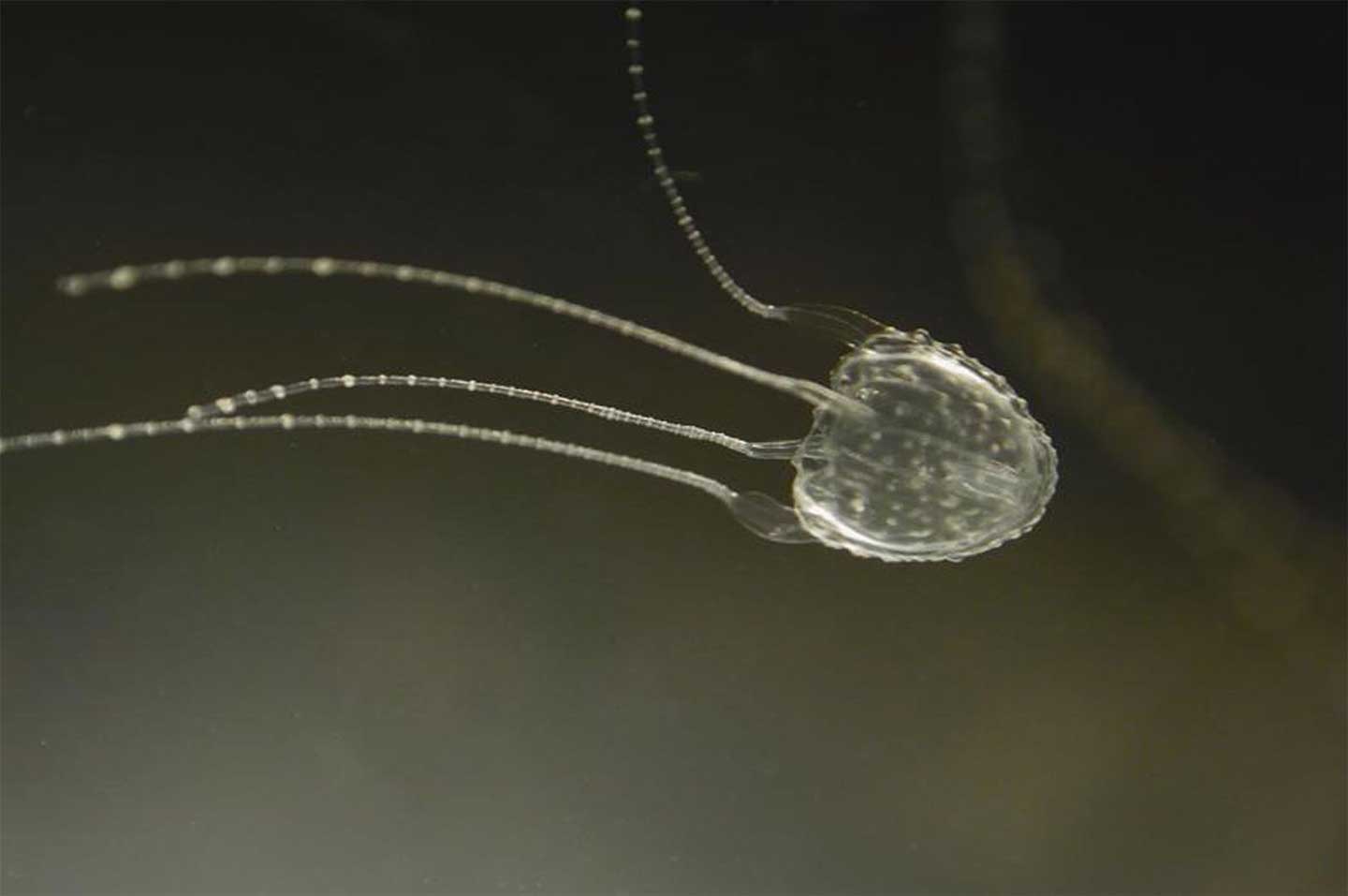
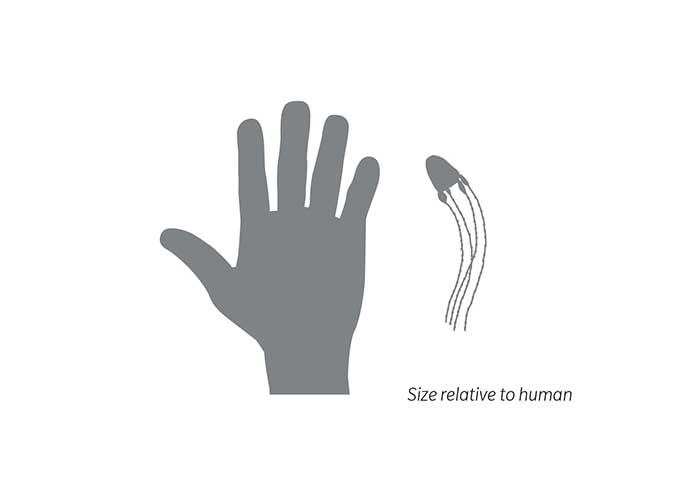
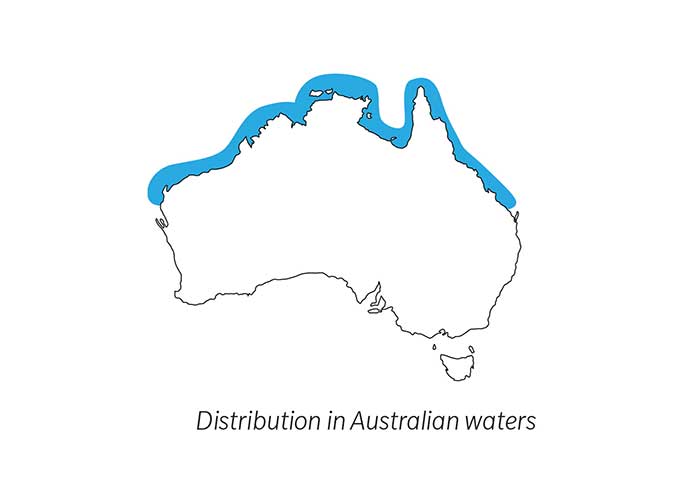
BLUBBER (CATOSTYLUS MOSAICUS)
Blubber
Mushroom-shaped bell 5-30cm in diameter. They are a creamy white brown colour (blue if found further north). No tentacles but eight ‘fronds’ or ‘frills’ hang underneath. The sting causes minor skin irritation.
The Australian species is found in Queensland, Victoria and New South Wales and into South East Asia.
- Remove casualty from water if safe to do so
- DRSABCD
- Wash area with sea water (not freshwater)
- Keep casualty at rest and reassure
- Do not allow rubbing of the sting area
- Place casualty’s stung area in hot water (as hot as the victim can stand) for 20 minutes
- If local pain is unrelieved by heat or if hot water is not available, apply a cold pack or ice in a bag
- Send for medical aid if symptoms persist or covers a sensitive area (e.g the eyes) and seek assistance from lifeguards
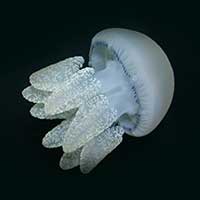
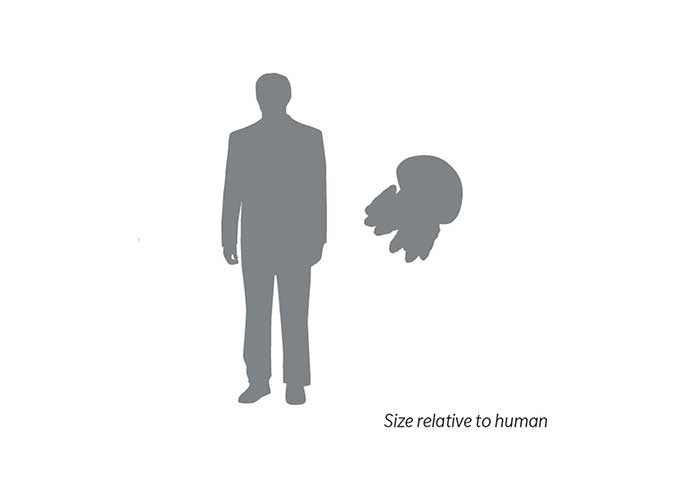
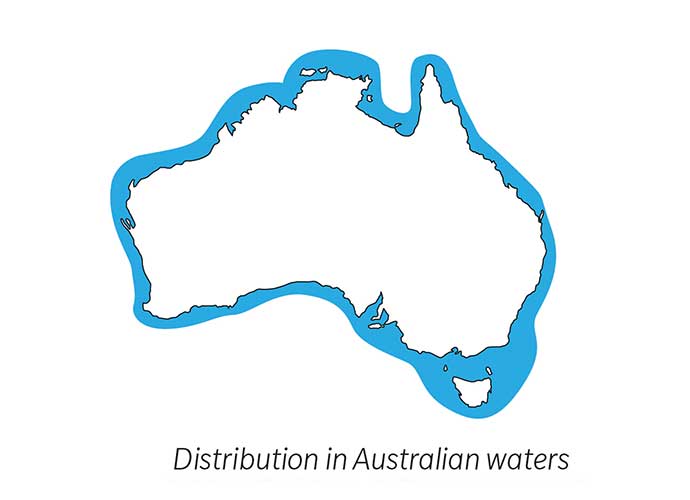
MORBAKKA (MORBAKKA FENNERI)
Fire Jelly, Moreton Bay Stinger
Large transparent box-shaped bell with one tentacle in each corner. The bell can be 6-18cm wide with 4 thick, ribbon-shaped tentacles that may be up to 1m long.
Distribution
Tropical Australian waters, all Queensland and northern New South Wales coasts, often an open water jellyfish. Sub-species are more common at Mackay, Moreton Bay and northern New South Wales.
Tropical Australia - North of Agnes Water
- Remove casualty from water if safe to do so
- DRSABCD
- If casualty has more than one localised single sting or looks/feels unwell, call triple zero (000) and seek assistance from a lifeguard if available
- Liberally douse stung area with vinegar for 30 seconds. If vinegar is unavailable, rinse the sting well with seawater
- Apply cold pack or ice in dry plastic bag for pain relief. Do not apply freshwater directly onto the sting.
- Casualty may experience Irukandji Syndrome and should be monitored for 45 minutes.
Non-tropical - South of Agnes Water
- . Rinse well with sea water
- Place stung area in hot water for 20 minutes
- If local pain is unrelieved by heat or if hot water is not available, apply cold pack or ice in a dry plastic bag
- If pain persists, is generalised or if the sting area is large or involves sensitive areas (e.g. the eyes), dial triple zero (000) and seek assistance from lifeguards if available
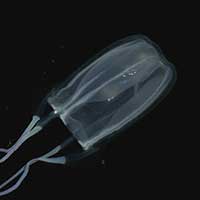
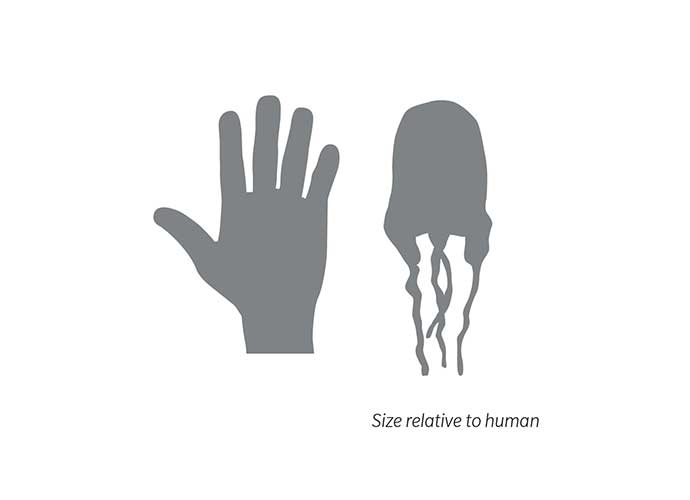
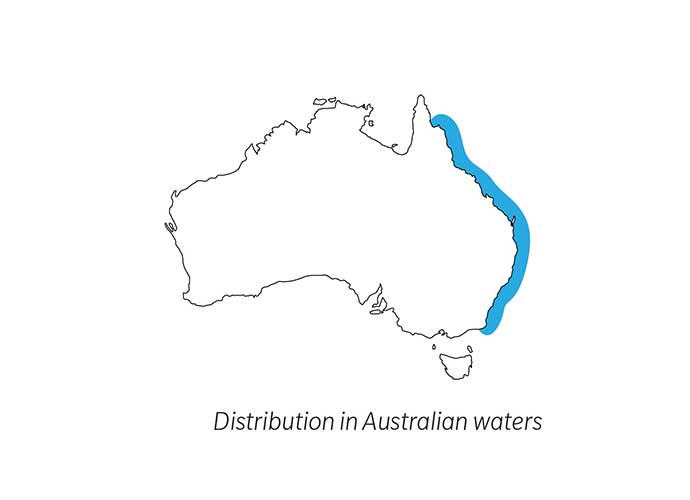
SNOTTIE (CYANEA SP.)
Hair jelly, Snottie, Lion’s mane
Large, flat bell up to half a metre in diameter with a large ‘mop’ of fine hairlike tentacles 5-100cm long. The bell top is often white or brown with yellow, brown or reddish colouring underneath.
Australia wide
Its sting causes immediate severe burning pain and whip-like marks, often with tentacles remaining on the stung area. Severe stings may cause the casualty to stop breathing and suffer cardiac arrest.
- Remove casualty from water if safe to do so
- DRSABCD
- Remove any adhering tentacles
- Wash area with seawater (not freshwater)
- Place casualty’s stung area in hot water (no hotter than the rescuer can comfortably tolerate) for 20 minutes
- If local pain is unrelieved by heat or if no hot water available, apply a cold pack or ice in a dry plastic bag
- If pain persists and sting area is large or involves sensitive areas (e.g. the eyes) dial triple zero (000) and seek assistance from the lifeguards if available
- Administer CPR if required
As the Cyanea is found in tropical areas, if they cannot be easily identified as such there is a risk that the sting is from a potentially lethal jellyfish and the priority is to preserve life by treating the casualty with vinegar.
Outside the tropics, where a large number of non-life threatening stings occur, the primary objective is pain relief with heat or cold.
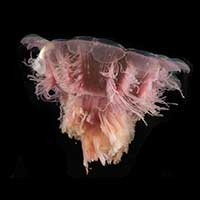


JIMBLE (CARYBDEA RASTONI)
Jimble
Transparent bell 1.5-3cm in diameter. Four tentacles, one in each corner, 5-15cm long.
Distribution
Australia-wide. Most common in South Australia, Western Australia and southern New South Wales.
- Remove casualty from water if safe to do so
- DRSABCD
- Remove any adhering tentacles
- Wash area with sea water (not freshwater)
- Place casualty’s stung area in hot water (as hot as the victim can stand) for 20 minutes
- If local pain is unrelieved by heat or if hot water is not available, apply a cold pack or ice in a bag
- If pain persists or is generalised, or if the sting area is large or involves sensitive areas (e.g. the eyes), dial triple zero (000) and seek assistance from lifeguards if available
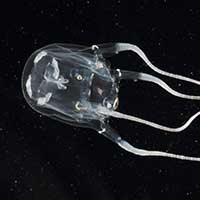
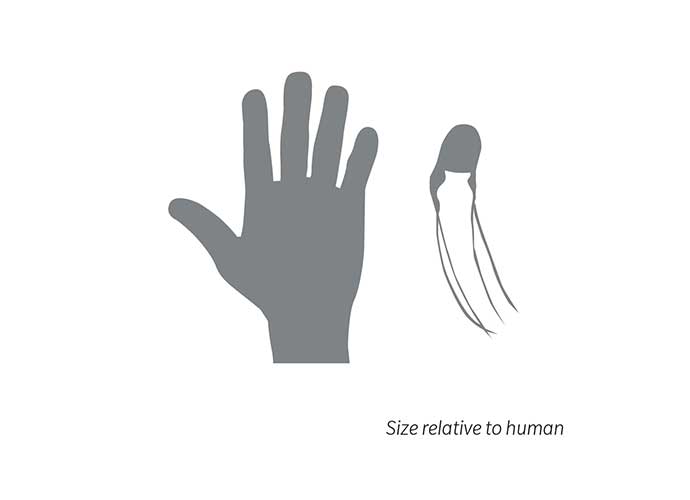

LITTLE MAUVE STINGER (PELAGIA NOCTILUCA)
Little Mauve Stinger
A small mushroom-shaped body from 2-6cm in diameter. Unlike most jellyfish, the bell is covered with numerous wart like lumps containing nematocysts (stinging capsules). The bell is usually pink or mauve with 8 pale brown tentacles 10-30cm in length.
Common in Australian waters. Occasionally large swarms invade the Sydney region.
- Remove any adhering tentacles
- Wash area with seawater (not freshwater)
- Place casualty stung area in hot water no hotter than the rescuer can comfortably tolerate for 20 minutes.
- If pain is unrelieved by heat or if hot water is not available apply a cold pack or ice in a dry plastic bag.
- Send for medical assistance if symptoms persist.
